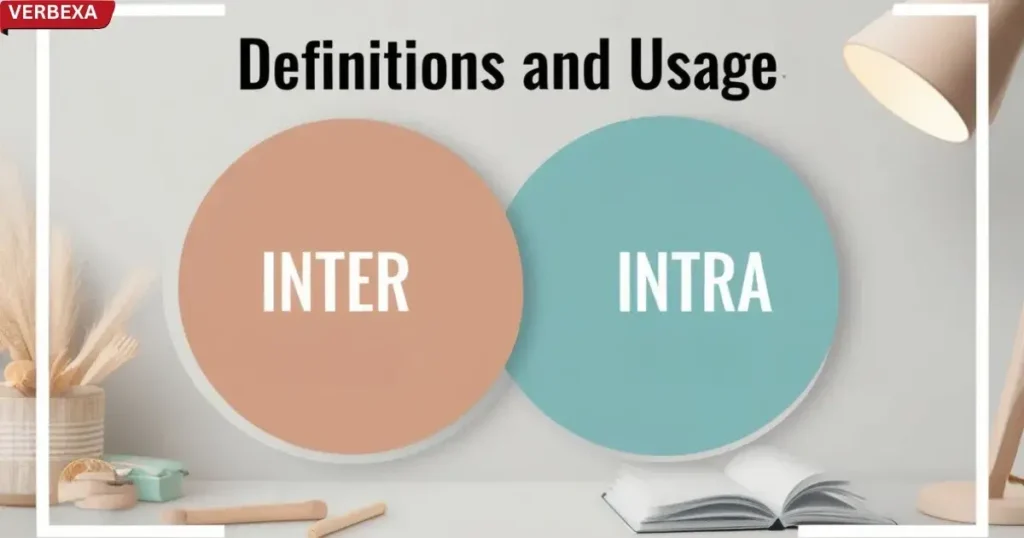Language is a fascinating landscape of nuanced connections, and few linguistic elements demonstrate this more clearly than the prefixes inter and intra. These seemingly small word parts carry immense semantic weight, often leaving writers and speakers confused about their precise usage. Inter vs intra might appear deceptively similar, but they represent dramatically different relationships and communication contexts.
Imagine you’re discussing a company’s operations. Would you refer to intercompany meetings or intracompany communications? The difference might seem subtle, but it can dramatically change the meaning of your message. This article will delve into the nuances of inter vs intra, exploring their definitions, usage, and providing practical examples to solidify your understanding. We’ll tackle the common confusion surrounding inter vs intra, clarifying their applications in various contexts, from business communication to everyday conversations.
Why the Confusion?
The confusion surrounding inter vs intra stems from their phonetic similarity. Both are prefixes that modify the meaning of a root word, but their implications are opposite. A simple mistake can lead to misinterpretations, especially in professional contexts.
Imagine mislabeling an internal company communication as “inter-office” instead of “intra-office”—it suggests communication with an external entity. This seemingly minor error can cause significant problems. Mastering the distinction of inter vs intra is crucial for precise and effective communication.
Definitions and Usage: Breaking Down the Prefixes

Inter: Between and Among
The prefix inter fundamentally means “between” or “among” different entities. It suggests cross-collaboration and connections across distinct groups or systems.
Examples of Inter Usage:
- Interstate highways connecting different states
- International diplomatic relations
- Interdepartmental project teams
Intra: Within and Inside
Conversely, intra means “within” or “inside” a single entity or group. It describes activities, communications, or processes occurring internally.
Examples of Intra Usage:
- Intranet – a private network within an organization
- Intramural sports within a single institution
- Intra-office communications
Here are a few more examples illustrating the difference between intra vs inter:
- Intercity bus service connects multiple cities.
- Intracity traffic refers to traffic within a single city.
- Intercompany agreements are contracts between separate companies.
- Intracompany communication happens within a single company. This difference between inter vs intra is crucial for clear communication.
Synonyms: Expanding the Linguistic Landscape

Inter Synonyms:
- Between
- Amid
- Across
- Mutually
- Reciprocal
- Connecting
- Collaborative
- Interrelated
- Intersecting
- Bridging
Intra Synonyms:
- Inside
- Within
- Interior
- Internal
- Enclosed
- Contained
- Inherent
- Intrinsic
- Domestic
- Self-contained
Comparison Table: Inter vs Intra
| Aspect | Inter | Intra |
|---|---|---|
| Definition | Between/Among entities | Within a single entity |
| Typical Context | Cross-group interactions | Single-group activities |
| Communication | Between departments | Within a department |
| Geographical | Interstate, international | Intracity, intranational |
| Organizational | Intercompany | Intra-office |
When to Use Each Term: Practical Guidance
Choose Inter When:
- Describing interactions between different groups
- Discussing cross-organizational activities
- Referring to connections across distinct entities
Choose Intra When:
- Discussing processes within a single system
- Describing internal communications
- Highlighting activities confined to one group or organization
Common Use Cases

- Intercity transportation connects different urban centers, while intracity services operate within a single city’s boundaries.
- International conferences bring together participants from various countries, whereas intranational events occur within a single nation.
- Interdepartmental teams collaborate across organizational units, but intradepartmental meetings involve only one department’s members.
Conclusion
Understanding the subtle yet significant difference between inter and intra transforms communication from ambiguous to precise. These prefixes are more than grammatical decorations—they’re powerful tools for expressing relationships and contexts with remarkable accuracy.
By recognizing when to use inter vs intra, you unlock a more sophisticated level of linguistic expression. Whether you’re crafting professional documents, engaging in academic writing, or simply seeking to communicate more effectively, mastering these prefixes will elevate your communication skills. This understanding of intra vs inter enhances clarity and precision.

This author is a passionate linguist and grammar enthusiast, dedicated to helping individuals master the art of language. With years of experience in teaching and editing, she brings clarity and precision to every sentence. Tina’s mission is to empower writers of all levels to express themselves with confidence and excellence.

